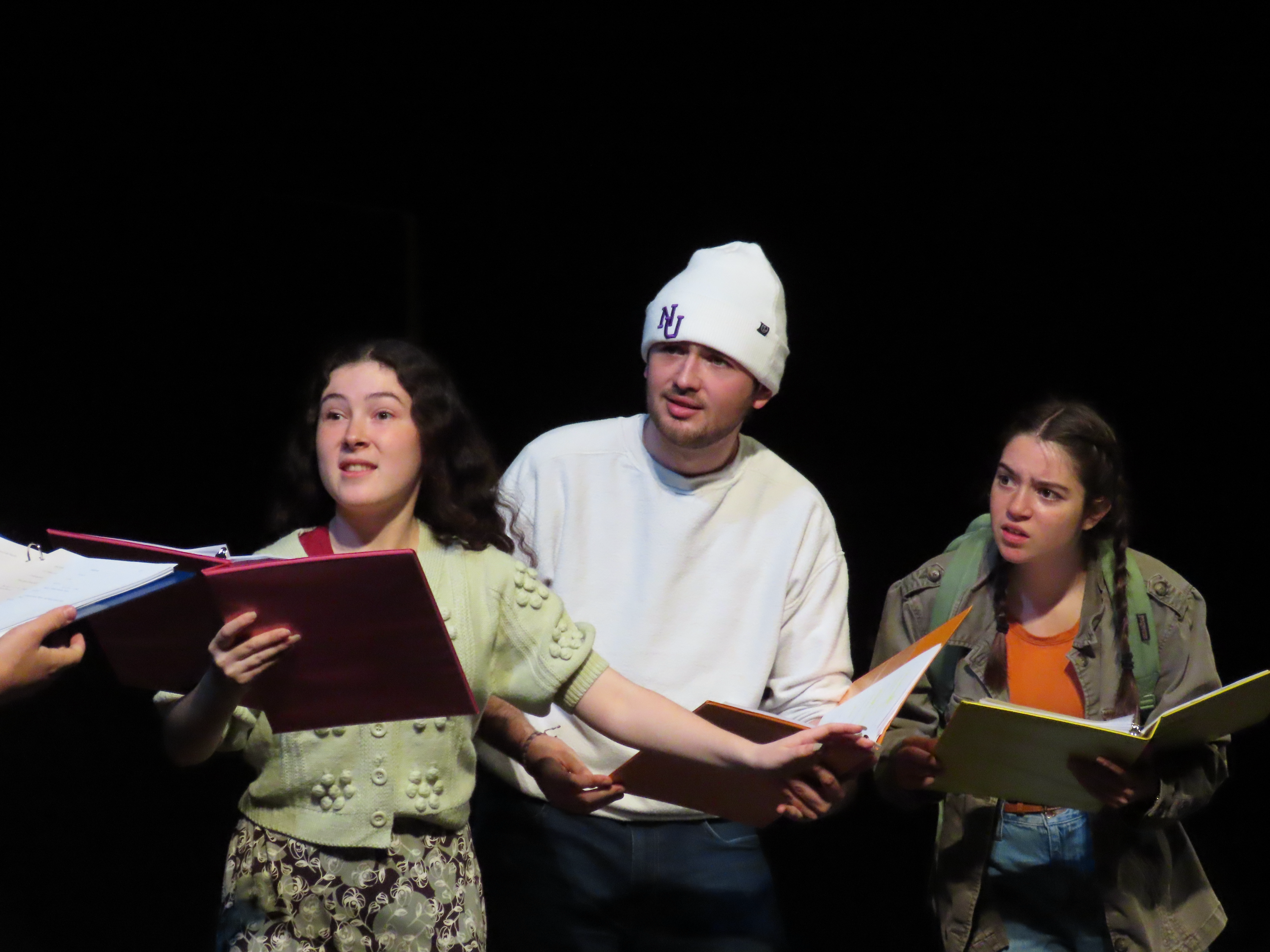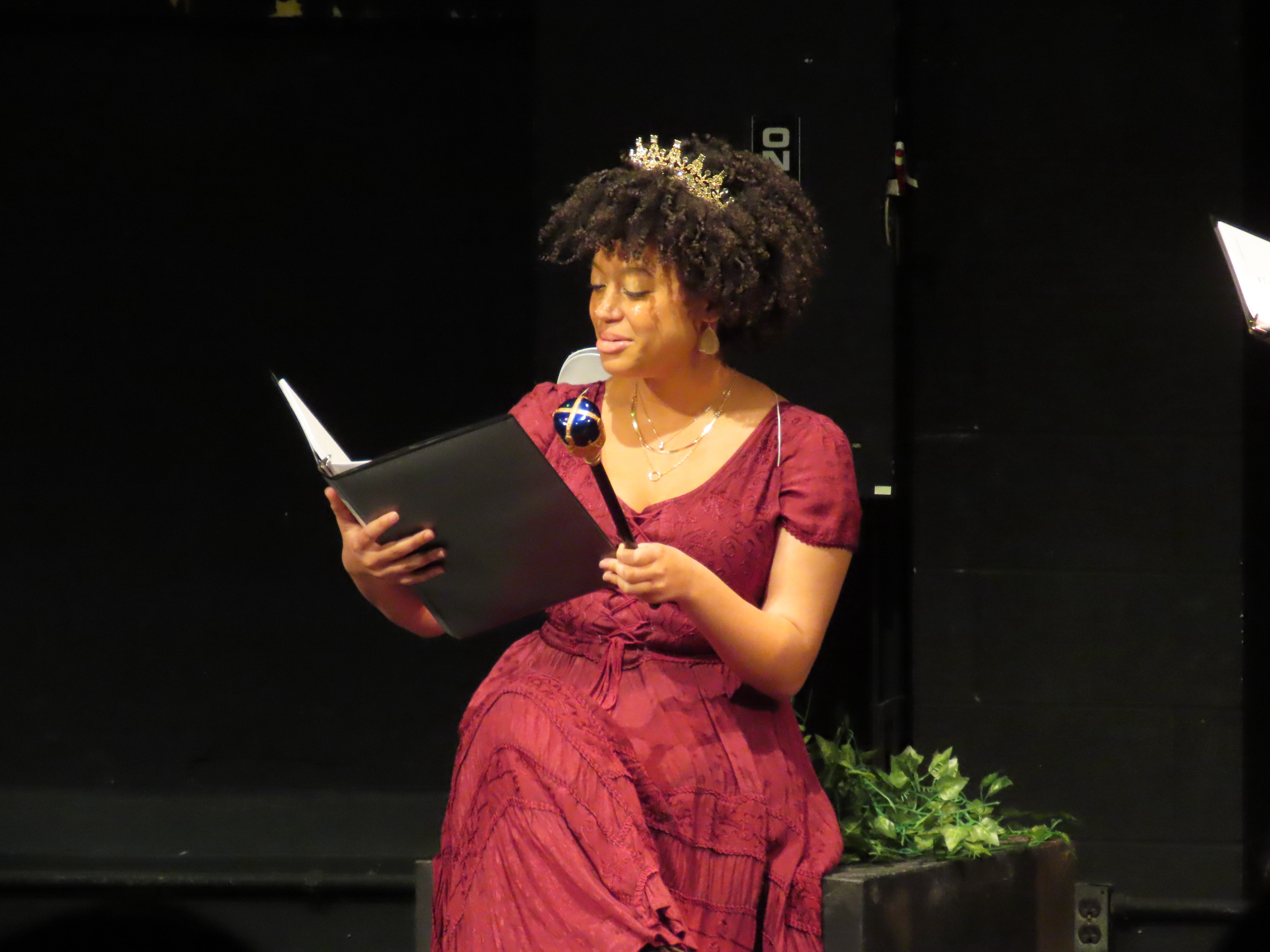
Young families filled The Virginia Wadsworth Wirtz Center holding activity packets and stickers with themes from performances of the 16th annual PLAYground Festival. The festival featured three student-produced plays aimed toward young audiences. The plays were submitted by professional playwrights from all around the country and selected by The Purple Crayon Players, a student-run theater company at Northwestern.
The first play was "Fly Away Home," which tells the story of Guatemalan-American Maya, who travels the world in search of her seemingly kidnapped older brother. Next was "The Golden Loc," which follows 10-year-old Zia, who, after being bullied at school for her locs, is transported to a magical queendom where she meets Aziza fairies, inspired by African mythology. Lastly, "Hannah and the Hollow Challah" centers on a challah-lover Hannah, who enters a portal to Breadland and must save its bread inhabitants from the Bitter Batch.
Beyond all the magical elements and fantastical premises, all three stories explore the themes of self-discovery, self-love, and growing up. These universal themes and the plays’ diverse representation resonated with audiences of all ages. During the talkback sessions after the shows, many adults shared their appreciation for the shows and their messages.
The plays were kid-friendly and incorporated lots of puns and jokes. The humorous tone allowed actors to experiment with more light-hearted roles compared to those in serious and heavy “adult” plays.
“I think that theater for young audiences is really underrated,” Ludmila Stoffel, School of Communication first-year who played a quetzal (a bird) and a penguin in “Fly Away Home,” said. “Having the ability to be absurd on stage, it’s really fun. Allowing myself to be silly and faint because there's a French rooster, or just play a really energetic penguin, like all that stuff is a set of skills that not all actors have.”

Besides the comedic elements, engaging the children relied heavily on visual storytelling. The show designers Will Boyle and Gabrielle Gutierrez, first-years from McCormick and School of Communication respectively, made both the lights and the costumes especially colorful and eye-catching.
From the dresses and wigs for the Aziza fairies to a chef’s hat and braided brown headband for bread characters, Gutierrez said she enjoyed trying to represent each character’s personality through their outfit. Boyle in turn helped bring the stories’ fantastical elements to life. He programmed the lights, for example, to represent the magic performed in “The Golden Loc” and to create the image of a starry sky for Hannah’s flight home from Breadland.
“Designing for children is fun because kids are smarter than you think they are,” Gutierrez said. “They will understand stories through imagery and representation, and you really don't need to spoon-feed them everything.”
To keep children’s attention, the directors also tried to make the shows more fast-paced and physical. School of Communication first-year Ani Lawit, who directed “Hannah and the Hollow Challah,” said she had worked a lot with actors on how they walk and express themselves to create a dynamic performance.
“Fly Away Home” director Eva Burkholder, also a School of Communication first-year, relied on her dance background and many conversations with her cast to ensure the authenticity of the scenes.
“I found it was a combination of what looked the most natural and what felt the most natural,” Burkholder said. “It was also very important to me to make sure that the actors like what they're doing, and they feel comfortable and confident.”
The sound design further elevated the performances. Upon the request from the playwright, the School of Communication first-year and “The Golden Loc” director Myah Shelton incorporated live music into the show. She found a pianist for the play, who composed the music, as well as a flutist and a guitarist to play during the performances.

The festival provided a low-stakes learning environment for the crew, most of whom were new to directing, stage managing or designing. Because the performances were the stage reading of the plays, the cast also carried the script with them throughout the show for reference.
“When actors have to be fully memorized, especially the first couple days, there's definitely a loss of character and acting,” Shelton said. “I think with their scripts there, they didn't have to do the extra work of searching through their brain to recall lines, and they were really able to give 100% to their characters, which was so awesome to watch.”
As smaller-scale productions, however, the plays only had 20 hours allocated for rehearsals and limited budgets to rely on. Because of the constraints, Gutierrez had to get creative in sourcing the props and costumes. To make Pinterest-inspired designs come true, she often had to ask her friends for some pieces or make some props herself, like the sunflower that grows and the butterfly muppets for “The Golden Loc.”
Communication and support among the crew and cast members, even across different plays, also helped the teams manage tight schedules and logistical issues more efficiently. Despite the formal hierarchy, the directors encouraged collaboration and input from actors and designers throughout the show.
“I definitely came into the process very flexible and knowing that I wouldn't be the only one whose feedback and perspective would shape this show,” Lawit said. “I think the show was made better because we took risks and we tried different ideas.”

As part of the selection process, the crew and the cast could indicate their preference for the plays they felt especially connected to. Burkholder said she identified with the themes of leaving home in “Fly Away Home,” while Lawit valued the representation of Jewish children in “Hannah and the Hollow Challah.” Shelton said she chose the story of “The Golden Loc” because, unlike many shows at NU, it centered on the experience of Black women and had a fully Black and female cast.
The plays were a great opportunity for actors and crew to build a community together. Shelton explained she put special effort into creating a productive and sustainable environment during the rehearsals, where everyone felt respected and understood.
“I am just honestly very grateful to everyone who worked on the production,” Shelton said. “I think there were a lot of elements that were maybe a little more time-intensive than expected from a process of that scale, but because everyone cared so much about the story and the message, they put their 110% into it.”